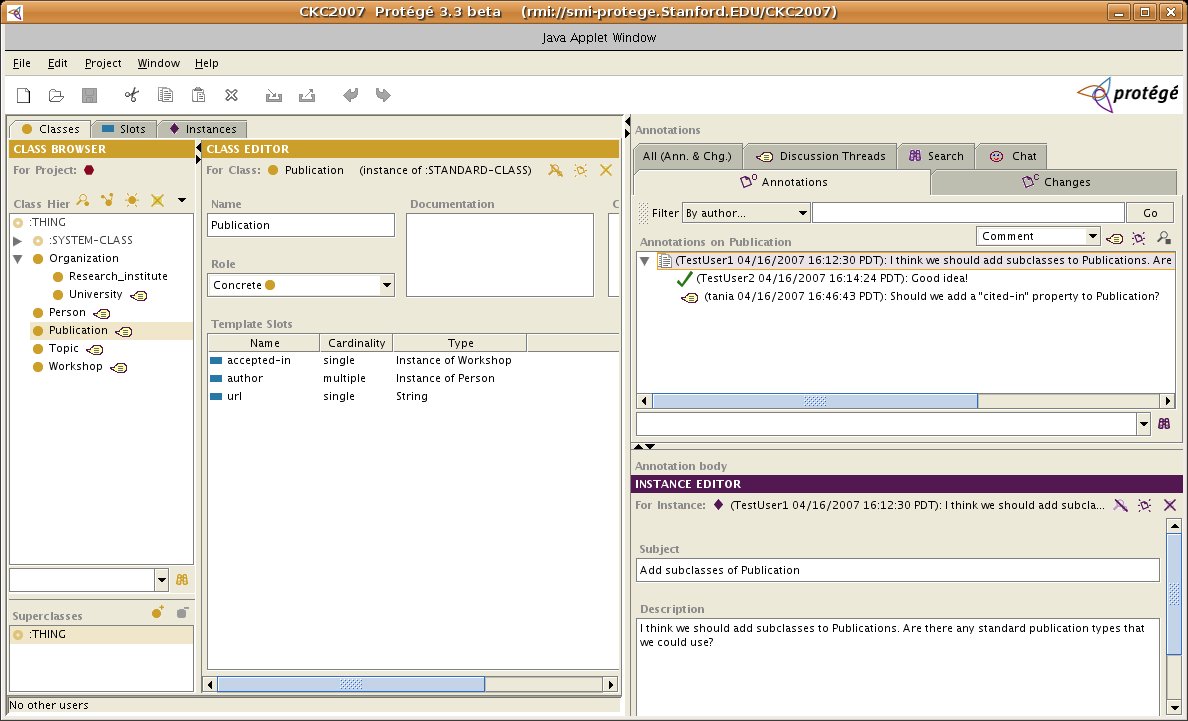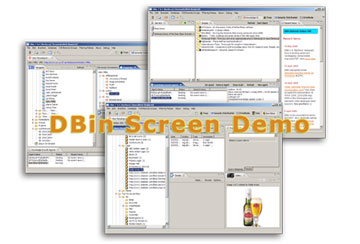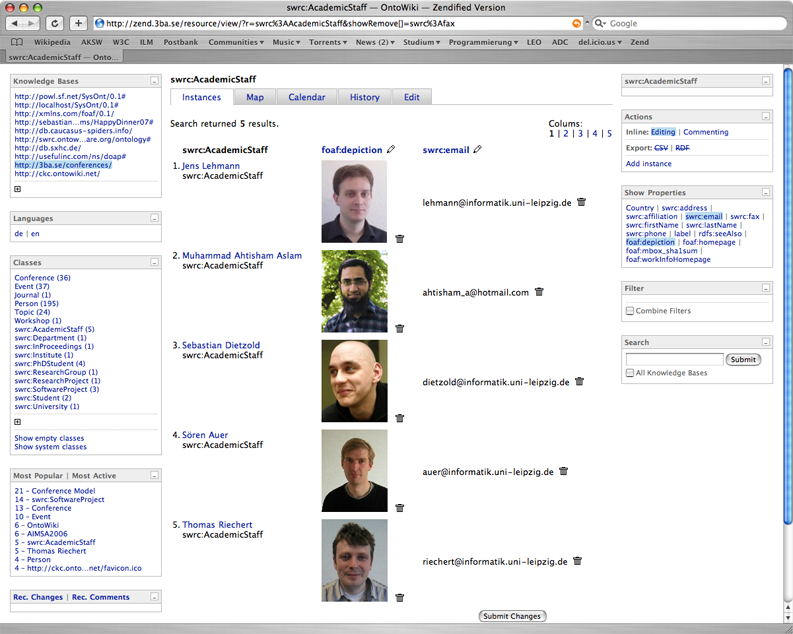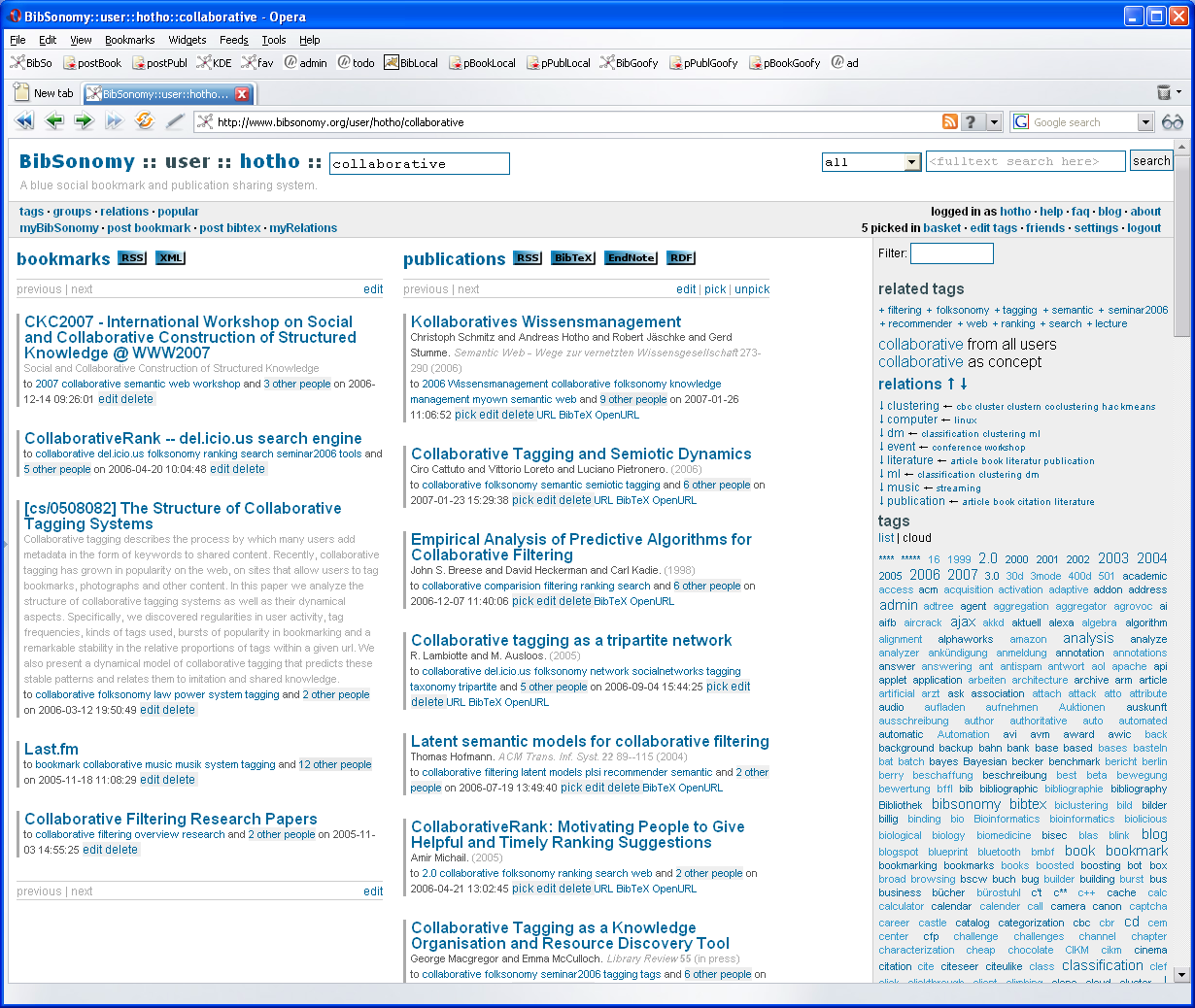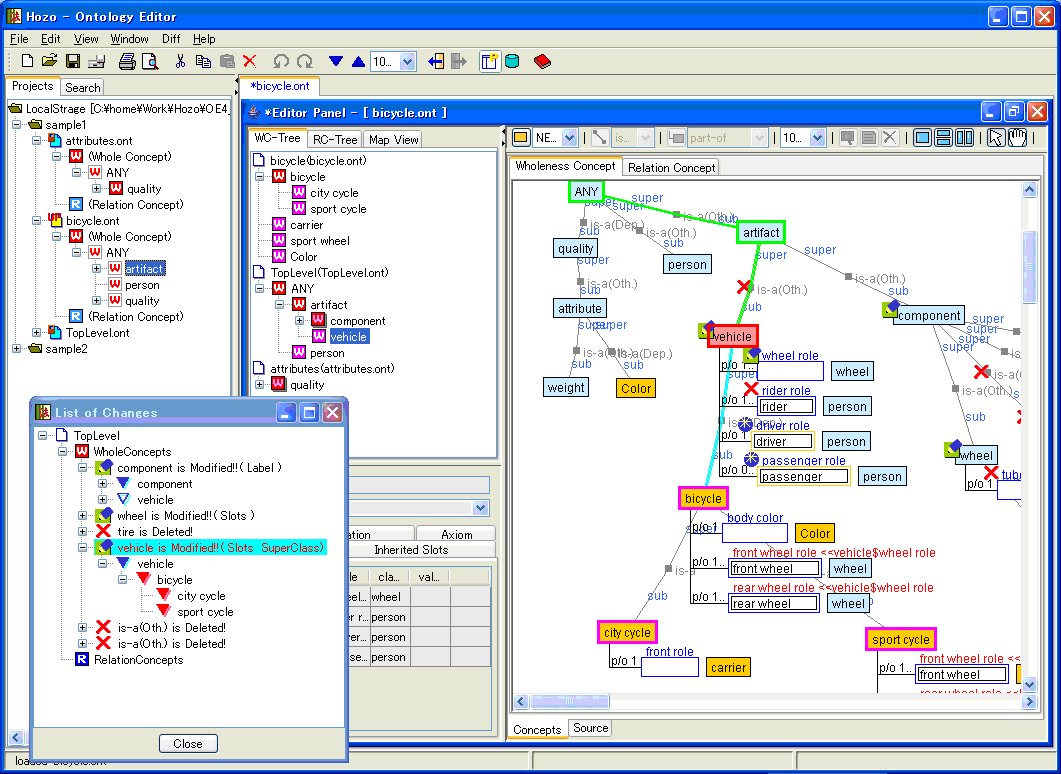You can think of SOBOLEO as del.icio.us + Semantics. Its completely
web-based, no installation required. Just login with any username and the password "www2007".
SOBOLEO is a system for web-based collaborative engineering
of SKOS ontologies and annotation of web resources. Users collaboratively
create a taxonomy, use it to annotate web resources and use it as
background knowledge during search. SOBOLEO has 4 main parts:
- Edit: A collaborative real time editor for the taxonomy
- this means you can see the changes other people do to the taxonomy
in real time - its more fun to use it if you find someone else to
edit at the same time. Please note that this is a taxonomy collaboratively
edited by everyone.
- Annotate: An annotation interface to add bookmarks to the
index. You can drag the annotation button to your browsers bookmark
panel to have it work as a bookmarklet. You can use concepts
from the taxonomy and arbitrary tags to annotate web resources.
- Home: A search engine that searches through the annotated
web resources using the taxonomy as background knowledge.
- Taxonomy: An interface to browse through the taxonomy and
the annotated resources.
Please note that SOBOLEO uses an unusual notion of narrower/broader
relations. In SOBOLEO "A is narrower than B" can be paraphrased as
"every document about A is also about B" or, even more focused on
search and retrieval: "every resource about A is of interest to someone
looking for resources about B". For this reason it is encouraged to
for example model the CEO of General Motor, Richard Wagner as narrower
than GM - even though he is obviously not a subclass of General Motors;
not a narrower concept in the traditional sense.
To use SOBOLEO, please make sure that you have JavaScript and Cookies
enabled.
Read
more..
Fill out
CKC feedback form for this tool. |

